#friulian
Explore tagged Tumblr posts
Text
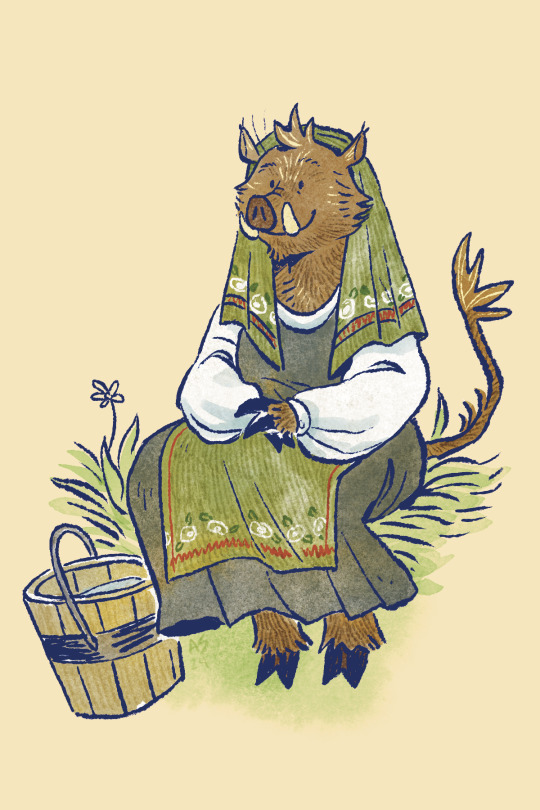
sometimes you meet other folks with shared ancestry on tumblr via posting your art and sometimes it makes you feel real fuzzy inside (shoutout to @mysticcollage for their knowledge, passion, time and regaling me with friulian facts <3 go check out their art!)
729 notes
·
View notes
Text

Heute & hodie, hoy, oggi
German heute, which means 'today', looks like and has the same meaning as Latin hodiē, the ancestor of Spanish hoy, Portuguese hoje, Italian oggi and many others. However, these similarities between heute and hodiē are entirely coincidental. Their etymologies are as different as they come. The infographic shows how exactly they're unrelated.
#historical linguistics#linguistics#language#etymology#english#latin#french#dutch#german#spanish#friulian#romansh#catalan#occitan#franco-provençal#neapolitan#sardinian#italian#portuguese#galician#asturleonese#low saxon#frisian#proto-germanic#proto-indo-european#lingblr
99 notes
·
View notes
Text
youtube
Carnicats - Suneta (Friulian)
#pop rap#carnicats#suneta#friulian#furlan#fur#romance#indoeuropean#europe#italy#2007#2000s#rap#Youtube
1 note
·
View note
Text
Idk why every year we have to start the new year suffering through the traditional italian new year's food at lunch like bro it's literally not good ❗❗❗❗
#FUCK cotechino sausage and FUCK lentils & idk if this is a thing in other regions but FUCK sauerkraut or whatever friulian equivalent we hav#🗨️
5 notes
·
View notes
Text
picture a friulian miku absolutely chowing down on some frico. for me.
2 notes
·
View notes
Text
So I guess this is part of an art trend/contest?

link

link

link

link

link

link

link

link

link

link
2K notes
·
View notes
Text

Haven’t seen her yet on my tl so: FRIULIAN MIKU🍷🍷
#hatsune miku#blaming brazilian miku for all these masterpieces on my tl#miku#regional miku#italian miku#digital illustration#二次創作#fanart#イラスト#illustration#初音ミク#original art#jumping on the bandwagon#traditional clothes#regional clothes#miku fanart#miku vocaloid#vocaloid fanart
2K notes
·
View notes
Text
thank you for the tag sophia @sillylittleflower!! 💜🌼
Do you have a pet? i have a cat named iole and i love her very much
Comfort food? tagliatelle with mushrooms
How many languages do you speak? italian, english, spanish (whatever i have left of it anyway). i can understand some swedish. (i'm always hesitant to include friulian in these but it is classified as a language so)
Random fact about yourself i'm terrified of grasshoppers
Something you’re proud of oof. not much these days ngl. i'm proud of my friends.
no pressure tags: @grapehyasynth @skibasyndrome @wilmon @justfriendsbestthings 💜
42 notes
·
View notes
Note
Friulian is actually closer to french than it is to Italian. The italian state called the many languages of italy "dialects" for the sake of nation-building, but this would be like saying that Catalan is a Spanish dialect or like saying that Low Saxon/Plautdietsch in a German dialect (the second one actually happened).
This is true, I can understand standard Italian (based on the Tuscan dialect) pretty well, but Friulian is very unique. Let alone something like Sicilian or Neapolitan. They would be considered different languages in my opinion, but you know that the terms 'dialect' and 'language' are very, very politically charged.
Once I met an Italian here who said that those "dialects" were "worthless" (he used a less extreme word but basically meant that) and everybody should learn standard Italian. I didn't really want to argue with him but you can imagine my inner reaction. I haven't spoken from people from every region but I can imagine there's lots of opinions there.
14 notes
·
View notes
Text

ab. 1510-1520 Emilian artist (so-called “Friulian friend of Dosso”) - Portrait of a Man (Portrait of a Gentleman with a Glove)
(Uffizi Gallery)
75 notes
·
View notes
Text
Countries that are no more: Republic of Venice (697AD-1797AD)
The first in a series I hope to feature on providing high level overviews of countries that existed and were influential to history or obscure and lost to most memory in time. The first up is the Republic of Venice.
Name: Serenisma Republega de Venesia (Venetian). In English this translates to the state's official name The Most Serene Republic of Venice. Also referred to as the Venetian Republic, Republic of Venice or just Venice.
Language: The official languages were the Romance languages of Latin, Venetian & later Italian. The regional dialect of Vulgar Latin in Northeastern Italy known as Veneto was the original language of Venice. This evolved in Venetian which was attested to as a distinct language as early as the 13th century AD. Venetian became the official language and lingua franca of the everyday Venetians and across parts of the Mediterranean although Latin would still be used in official documents and religious functions. Overtime, modern Italian was spoken in Venice though the Venetian language remains technically a separate language in Italy's Veneto region and the surrounding areas to this day.
Minority languages across the republic's territory included various Romance languages such as Lombard, Friulian, Ladin, Dalmatian and non-romance languages such as Albanian, Greek & Serbo-Croatian.
Territory: The republic was centered on the city of Venice founded in the Venetian lagoon on the north end of the Adriatic Sea to the northeast coast of the Italian peninsula. It also included the surrounding regions of mainland northeast Italy in the regions of Veneto and Friuli and parts of Lombardy. This became known as the terraferma or the mainland holdings of the republic. It also possessed overseas holdings in modern day Croatia, Slovenia, Montenegro, Albania, Greece & Cyprus.
Symbols & Mottos: The main symbol of Venice was its flag which had the famed Winged Lion of St. Mark. This represented the republic's patron saint, St. Mark. Mark the Evangelist after whom the Gospel of Mark in the New Testament in the Bible is named. Mark's body and holy relics were taken by Venice and said to be housed in the Basilica di San Marco (St. Mark's Basilica) in Venice itself. Variations of this flag differed during times of peace & war. During peace the winged lion is seen holding an open book and during war flags depicted the lion with its paw upon a bible and an upright sword held in another paw.
The republic's motto in Latin was "Pax tibi Marce, evangelista meus" or in English "Peace be to you Mark, my evangelist."
Religion: Roman Catholicism was the official religion of the state but Venice did have minorities of Eastern Orthodox & Protestant (usually foreign) Christian denominations at times in its territory and it also had small populations of Jews and Muslims to be found in Greek and Albanian territories during the wars with the Ottoman Empire.
Currency: Venetian ducat and later the Venetian lira.
Population: Though population varied overtime for the republic due to a variety of factors such as war & changing territory and disease & its subsequent effects. There was rough population recorded of 2.3 million people across all of its holdings in the mid sixteenth century (circa 1550-1560). The vast majority of its population was found in the terraferma of northern Italy and the city of Venice itself with its concentrated population on the islands within the Venetian Lagoon. The Greek island of Crete and the island of (Greek speaking) Cyprus were the most populous overseas possessions of the republic's territory. The rest of the population was found its various holdings in the Balkans mostly along the Adriatic coastline.
Government: The republic followed a complex mixed model of government. Essentially it could be characterized as a mixed parliamentary constitutional republic with a mercantile oligarchy ruling over it in practice. It had no formal written constitution, and this led to a degree of evolution without exactly defined roles often in reaction to happenings in its history. The resulting government became more complex overtime as institutions became increasingly fragmented in their size, scope and duties, some almost obsolete but still retained and others not fully defined. Yet, the republic managed to function quite well for most of its history. It incorporated elements of oligarchy, monarchy & limited democracy.
It's head of state and government was known as the Doge which is akin to the term of Duke. Though this similarity of name ends there. The Doge was neither similar to a duke in the modern sense nor was it meant as a hereditary position. The doge was rather a lifetime appointment much like the Pope for the Roman Catholic Church. Furthermore, doges were elected by the ruling elite of Venice, namely its wealthy oligarchy merchant class. The doge didn't have well defined & precise powers throughout the republic's 1,100-year history. It varied from great autocracy in the early parts of the republic to increasing regulation and restriction by the late 13th century onward. Though the doge always maintained a symbolic and ceremonial role throughout the republic's history. Some doges were forcibly removed from power and post-1268 until a new doge could be elected, the republic's rule transferred to the most senior ducal counsellor with the style of "vicedoge". After a doge's death following a commission was formed to study the doge's life and review it for moral and ethical transgressions and placed judgment upon him posthumously. If the commission found the deceased doge to have transgressed, his estate could be found liable and subject to fines. The doge was given plenty of ceremonial roles such as heading the symbolic marriage of Venice to the sea by casting a marriage ring into the sea from the doge's barge (similar to a royal yacht). Additionally, the doge was treated in foreign relations akin to a prince. It's titles and styles include "My Lord the Doge", "Most Serene Prince" and "His Serenity". The doge resided in the ducal palace (Palazzo Ducale) or Doge's Palace on the lagoonfront in Venice next St. Mark's Basilica and St. Mark's Square.
While the doge remained the symbolic and nominal head of the government, the oligarchy remained supreme overall. The supreme political organ was the 480-member Great Council. This assembly elected many of the office holders within the republic (including the doge) and the various senior councils tasked with administration, passing laws and judicial oversight. The Great Council's membership post 1297 was restricted to an inheritance by members of the patrician elite of the city of Venice's most noble families recorded in the famed Golden Book. This was divided between the old houses of the republic's earliest days and newer mercantile families if their fortunes should attain them property ownership and wealth. These families usually ranged between 20-30 total. They were socially forbidden from marrying outside their class & usually intermarried for political and economic reasons. Their economic concerns were chief to the whole of the republic and most centered on Eurasian & African trade throughout the Mediterranean Sea's basin. Members of these families served in the military and eventually rose to prominent positions of administration throughout the republic.
The Great Council overtime circumscribed the doge's power by creating councils devoted to oversight of the doge or executive and administrative functions (similar to modern executive cabinets or departments) whereas the doge became more and more a ceremonial role. The also created a senate which handled daily legislation. They also created a Council of Ten set to have authority over all government action. Other bodies were formed from this Great Council and others overtime. This resulted in intricate and overlapping yet separate bodies which found themselves subject to limitations with various checks on virtually each other's power. Essentially running as committees or sub-committees with checks on another committee's powers. These bodies weren't always completely defined in their scope and overtime their complexity led to battles to limit other's power (with limited success) along with gradual obsolescence and sometimes slow grinding administration.
Military: The military of Venice consisted of a relatively small army and a powerful navy. The famed Venetian Arsenal in Venice proper was essentially a complex of armories and shipyards to build and arm Venice's navy. The arsenal in Venice has the capacity to mass produce ships and weapons in the Middle Ages, centuries before the Industrial Revolution allowed for modern mass production in economic and military applications. Venice's military was designed towards protecting it possessions both in Italy and its overseas territories. The primary concern was to secure Venice's trade routes to the rest of Europe as well as Asia & Africa. It faced opponents' overtime ranging from the Franks, the Byzantine Empire, Bulgarians to other Italian city-states, France, Austria, the Ottoman Empire and Barbary Corsairs along with European pirates in the Adriatic and Mediterranean. It played key roles as a naval transport in other powers including throughout the Crusades. It also played a key role in the infamous Fourth Crusade which culminated in the Sack of Constantinople in 1204 AD, an event which fractured the Byzantine Empire into a half-century of civil war between successor states before a weakened revival in the mid 13th century. The Byzantine Empire would linger until the 15th century when the Ottoman Empire finally conquered its last remaining portions. Many attribute this loss to in part to its weakness still resulting from that 1204 sack lead by Venice. The Venetian military would exist until the republic's end when The French Republic's Army of Italy under Napoleon Bonaparte conquered the republic, a conquest in which the Venetians surrendered without a proper fight.
Economy: Venice's economy was based largely in trade. Namely control over the salt trade. Venice was to control salt (preservative of food) production and trade throughout the Mediterranean. It also traded in commodities associated with the salt trade routes to Eurasia and Africa. These commodities could include other foodstuffs (grains, meats & cheeses), textiles & glassware among other items.
Lifespan: 697AD-1797AD. Though the exact founding of Venice itself hasn't been determined. It is traditionally said to have taken place in the year 421 AD. At a time when Roman citizens in northeast Italy were escaping waves of Germanic & Hunnic barbarian invasions that contributed to the collapse of the Western Roman Empire. The going theory is that these Romans evaded barbarian attacks by building their homes in the Venetian Lagoon by hammering wood stakes to form a foundation which sunk into the muddy shallows and petrified. Upon which they built their homes and created a cityscape marked by streets and canals interlaced. Venice remained a community of fishermen and merchants and was nominally under the control of the surviving Eastern Roman Empire (Byzantine Empire). It avoided barbarians overrunning the land but also was removed enough from Constantinople that it was relatively autonomous and became strategically important as a port. Other islands in the lagoon also banded together with Venice in a loose confederation of sorts by the 6th and 7th centuries which increased economic productivity and security for the city. The first doge was said to have been elected in 697 AD under the name Paolo Lucio Anafesto, though there is dispute about his historicity. Anafesto supposedly ruled until 717 AD. This is traditionally regarded as the foundation of the Republic of Venice.
Venice's third doge was Orso Ipato who reigned from 726-737 and he is the first undisputed historically recorded doge whose existence was confirmed. Orso also known as Ursus was known to strengthen the city's navy and army to protect it from the Lombard Germanic invaders who had overrun and ruled Italy by that time. Though nominally part of the Byzantine Empire, by 803, the Byzantine Emperors are said to have recognized Venice's de-facto independence. Though this view is disputed somewhat, it nevertheless remained virtually independent until its collapse in 1797.
Venice also partook in the slave trade of non-Christian European populations from Eastern Europe and transferred them to North Africa, selling them to the Arab and Berber (Moors) of the Islamic world.
As the 9th century progressed, the Venetian navy secured the Adriatic and various trade routes by defeating Slavic and Muslim pirates in the region. The Venetians also went onto battle the Normans who settled in southern Italy and Sicily in the 11th century.
Venice provided naval transports for Crusaders from Western Europe starting with the successful First Crusade.
The High Middle Ages (1000AD-1350AD) saw the wealth and expansion Venice increase dramatically. However, over this period Venice gradually came into mixed relations with its former ruler the Byzantine Empire. The Byzantine Empire endured corruption, civil war and foreign invasion which saw it alternate between periods of waning power and restored power. Venice provided the Byzantines with an increased naval force when needed and many trading commodities. In exchange for this, Venice was granted trading rights within Byzantine territory and a place within the "Latin Quarter" for Western Europeans in Constantinople. The Byzantine populace though calling themselves "Romans" having taken on the political & cultural institutions of the Roman Empire which lived on in the East long after the Western half's collapse, were in fact mostly Greek by ethnicity, language and culture. Their religion was the Eastern Orthodox or Greek Orthodox branch of Christianity which was often at odds with Roman Catholics of Western Europe. Resentment at the religious and cultural differences along with the economic displacement the Venetians and other Italian merchants from Genoa & Pisa had caused in Constantinople's maritime & financial sectors contributed to the 1182 "Massacre of the Latins" in which the Byzantine Greek majority of the city rioted and slaughtered much of the 60,000 mostly Italian Catholics living within the city. Thousands were also sold into slavery to the Anatolian Seljuk Turks.
This event lingered in Venice's memory as its trade in the city was reduced for awhile. Though trade resumed between the Byzantines and the West again shortly thereafter, the event soured the perception of the Greeks to Western Europeans. This along with a subsequent power struggle for the throne of the Eastern Roman Emperor fell into Venice & Western Crusader's hands in 1202. Looking to originally ferry Western Crusaders to the Levant against the Islamic Ayyubid Sultanate of Egypt & Syria. Events transpired that devolved into Venice conspiring under its doge Enrico Dandalo along with other Western leaders and a Byzantine claimant to the throne that resulted in the first successful sacking of Constantinople in 1204. The city was ransacked, some Greek citizens murdered by the Crusaders & classical works of art destroyed or looted (most famously the four bronze horses of St. Marks in Venice) and politically, the Byzantine Empire would be temporarily fractured between competing Greek dynasties while the Crusaders along with Venice created the short-lived Latin Empire, which controlled Constantinople and its environs while Venice also acquired Greek territories which it was to hold for centuries. Venice also came into conflict with the Second Bulgarian Empire at this time as its support of the Latin Empire of Constantinople encroached on the Bulgarian's land. Eventually by the mid 13th century the Latin Empire (never fully stable) collapsed, and the Byzantine Empire was restored until the mid-15th century but forever weakened as a result of the 1204 sacking of its capital.
Venice reached trade deals with the Mongol Empire in 1221. As the century wore on, it also engaged its rival in Western Italy Genoa in some warfare.
The 14th century is generally regarded as Venice at its peak as it faced down Genoa in a number of battles and came to be the most dominant trading power in the Mediterranean, though it was impacted by the Black Death plague. Nevertheless, into the 15th and even 16th centuries, it partook in a number of wars which saw it gain territory on the Italian mainland, establishing its terraferma domain.
By the 16th late 15th and into the 16th century new threats had emerged such as the Turkish Ottoman Empire. The Ottoman capture of Constantinople in 1453 is seen as the end of the Middle Ages as the last political vestiges of the Roman Empire vanished from the world stage. However, a number of Byzantine Greeks escaped on Italian ships during the conquest of the city and others escaped Greece in subsequent years. These refugees brought with them artistic and cultural heritages that reemphasized the classical forms of Ancient Greece and Rome and lead to the Italian Rennaisance in art & other forms of culture. Ideas which emphasized humanism and spread to elsewhere in Europe overtime.
While there was a cultural flourishing in Venice and elsewhere due to the Rennaisance. There was also the first signs of economic and political decline as well from the 16th century onwards. The Ottoman dominance in the Eastern Mediterranean meant the traditional trade routes to the East were cut off by an often-hostile Muslim power. Additionally, other maritime powers in the West namely Spain & Portugal had recently begun exploring the continents of South & North America and in time France, England & the Netherlands would join in them. This decline in Eastern trade and the newfound trade routes dominated by other European states in the Americas and Asia (by way of rounding Africa) would render trade with Venice gradually obsolete. Venice would still maintain what trade it could in the Mediterranean, but it also focused on production and placed increasing importance on its Italian mainland possessions rather than just its declining position overseas in Greek territories, including the loss of Cyprus to the Ottomans in 1571. Though the Venetian navy with other Christian powers won the notable naval victory against the Ottomans in 1570 at Lepanto.
It was also involved in the Italian Wars between various rival city states and the power struggle between the Papacy, France and the Hapsburg realms of the Holy Roman Empire and Spain.
Other factors that impacted the declining trade in the 17th century included an inability to keep up in the textile trade elsewhere in Europe, closure of the spice trade to all but the Spanish, Dutch, Portuguese, French and English and the Thirty Years War (1618-1648) which impacted Venice's trade partners.
Ongoing wars including a 21-year siege of Crete by the Ottomans saw further losses. Although Venice partook in the Holy League headed by the Holy Roman Empire (under Hapsburg Austria) which saw some minor temporary gains from the Ottomans in southern Greece before losing them again in the early 18th century.
War and loss of overseas territories along with a stagnant economy was slightly offset by a somewhat strong position in northern Italy. Nevertheless, its maritime fleet was reduced to a mere shadow of its former glory and it found itself sandwiched still between Austria and France. Over the rest of the 18th century, economic stagnation and social stratification remained prevalent while Venice remained in a quiet peace. However, the French Revolution reignited war in Italy and while Venice remained neutral, it would soon get caught up in events.
The Austrians and the Piedmontese (Italian) allies were beaten by the French Republic's Army of Italy headed by an up-and-coming general named Napoleon Bonaparte. Bonaparte and the French army crossed the borders of northern Italy into Venetian neutral territory to pursue the Austrians. Eventually half of Venice's territory was occupied by France and the remainder of the mainland was occupied by Austria. By secret treaty the French and Austrians were to divide the territory between themselves (Venice was consulted in the matter). Bonaparte gave orders to Venetian doge Ludovico Manin to surrender the city to French occupation to which he abdicated his power. The republic's Major Council met one last time to officially declare an end to republic on May 12th, 1797, after 1,100 years. Venice was placed under a provisional government and ironically the French looted Venice stripping it of artworks to grace the Louvre Museum in Paris along with the Arc d'Triomphe, taking the famed four bronze horses of St. Mark's to adorn the triumphal arch in Paris, the very same horses Venice had confiscated from Constantinople in 1204. It was a symbolic end to the republic, the irony of which did not escape commentators at the time. Following Napoleonic France's final defeat in 1815 the horses were returned to Venice and St. Mark's where they remain today. Venice itself was given over to the Austrian Empire.
The Republic of Venice has a historical legacy in terms of its economic accomplishments through control of trade and its innovative mass production of ships, armaments & trade commodities. It also holds a political legacy worthy of study given it was a unique and enduring polity for 1,100 years. One that maintained a complex and at times chaotic form of government that still managed to function and endure for centuries.

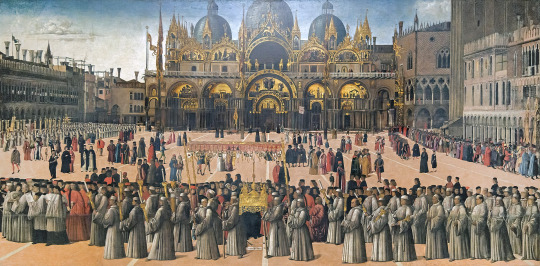
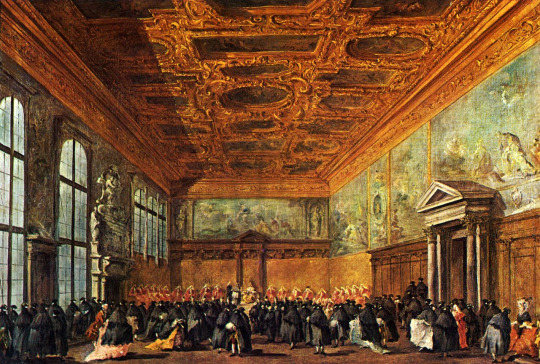
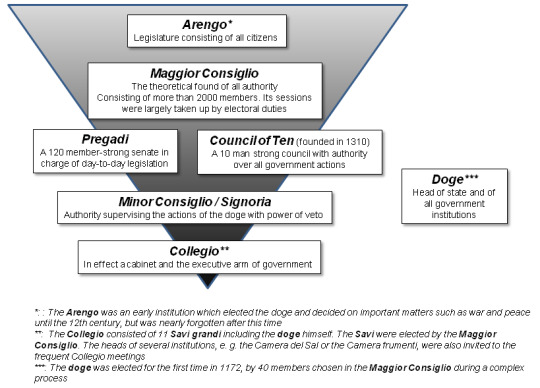
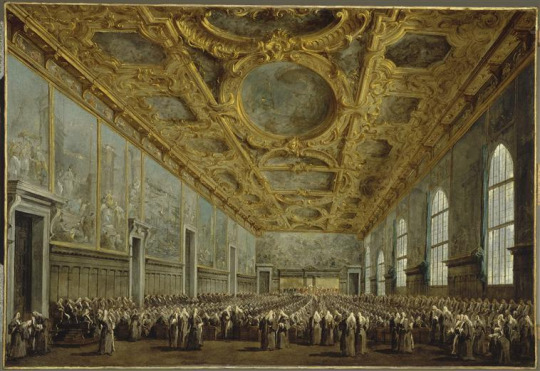
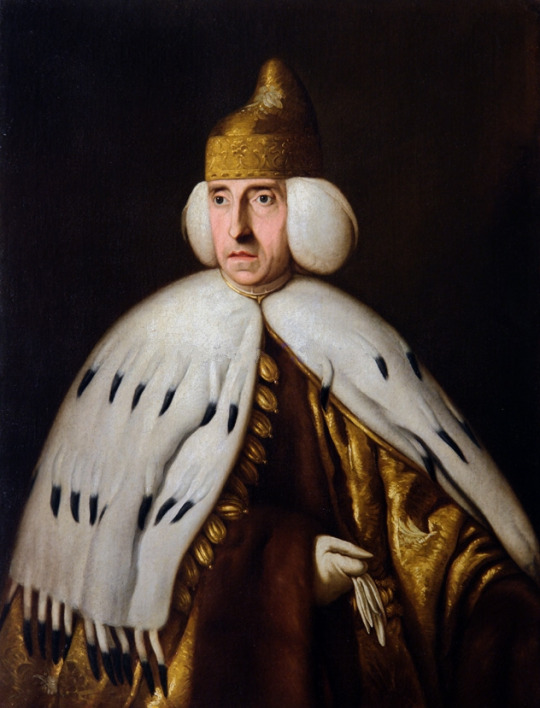
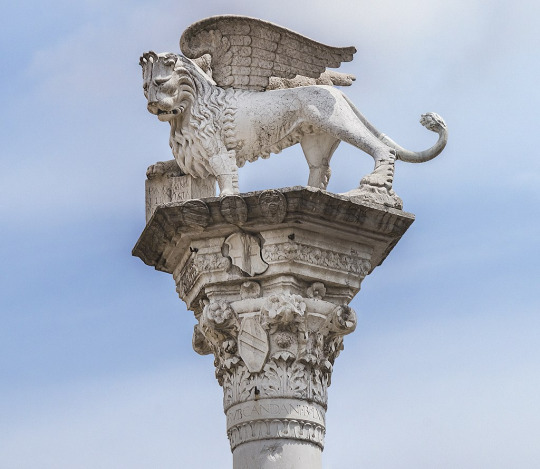

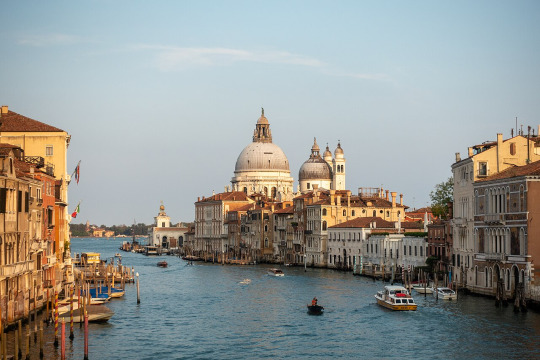
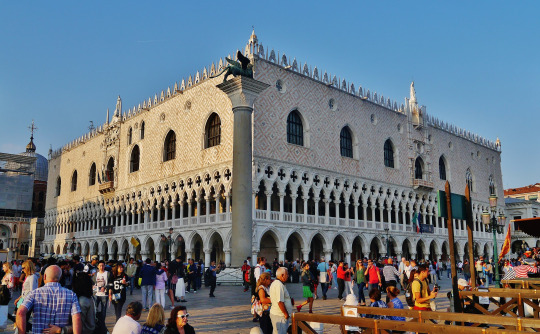
#military history#middle ages#venice#venetian republic#italy#politics#political history#trade#economics#governance#commerce#ottoman empire#spain#byzantine empire#napoleon#doge#republic
73 notes
·
View notes
Text

#my art#a little friulian boar playing some accordion for you on this fine evening#boar#animal art#animal illustration
151 notes
·
View notes
Text

Cinders & cendres
After a cosy Christmas fire, there are cinders in the fireplace, as well as ashes, which in French are called cendres. While cinder and cendre may look alike, they aren't etymologically related in any way: they come from two entirely unrelated words. However, cendre did influence the spelling of cinder. My new infographic tells you all about it.
#historical linguistics#linguistics#language#etymology#english#latin#french#dutch#german#spanish#proto-germanic#proto-indo-european#romanian#low saxon#friulian#italian#portuguese#occitan#catalan#corsican#romansh#franco-provençal#aromanian
56 notes
·
View notes
Text

Scallops Gratin with a delicious parsley and onion butter. A traditional recipe from Friuli-Venezia Giulia in the north of Italy.
Full Recipe----> https://www.insidetherustickitchen.com/friulian-scallops-gratin/
9 notes
·
View notes
Text
have a nice weekend, the Friulian plain from the castle of Fagagna UD Italy
6 notes
·
View notes
Note
about that accent post, what does a roman accent sound like vs other italian regional accents?
I love languages and over-explain stuff so this might get long... I'm sorry about that.
Italy has an incredibly diverse language landscape, because it wasn't a country until 160ish years ago, multiple different languages evolved from Latin at the same time.
So for example Sardinian, Sicilian, Friulian and Neapolitan are languages and "cousins" of modern Italian (which comes from Tuscan), they have their own grammar rules and worlds that aren't similar to their Italian translation. They aren't mutually intelligible with each other or with Italian.
It's very interesting because history plays a role on how the language was formed, so while the base is always Latin depending with whom that place had more contact (basically either who invaded us or who we invaded) you can see words popping up in that dialect that come from another language. So there is a little bit more Arabic infused in Sicilian, Greek in Apulian, Sloven in Friulian etc.
So while Roman is not a language but a dialect we do have more words that come from liturgical Latin and French.
The main difference with Roman I'd say is the attitude, like we live in the capital, we have places to go, traffic to be stuck in we do not have time to pronounce every letter.
An example:
eng: "I don't want to go there"
ita: "(io) non ci voglio andare"
rom: "n'ce vojo anna"
here you can see a few of the things that are very common in the Roman dialect, the first is that the infinitive forms of Italian verbs always end in -re (or better they end either in -are, -ere or -ire) a Roman will almost never pronounce the -re andare -> anna' (to go)
giocare -> gioca' (to play)
piovere -> piove' (to rain)
dormire -> dormi' (to sleep)
In the case of andare we also "semplify" the d and just add another n to the sound. That is also very common.
Another sound that is peculiar of the roman dialect is the consonantic i which we tend to write as a j just as they would do in Latin (up to a certain point) but that has become a GLI (similar sound but not exactly the same) in Italian.
Yugoslavia is Jugoslavia in Italian, but it is pronounced the same exact way. In most other words the consonantic i sound is written as either I (es ieri, yesterday) or GLI.
fun fact, I cannot for the life of me properly pronounce the GL and it's the thing that usually clues people in on the fact that I am from Rome. So voglio becomes vojo. Other features include:
putting double consonants were there are none:
sedia -> sssedia (chair)
numero -> nummero (number)
only pronouncing one consonant were it should be a double:
terra -> tera (earth)
changing Ls into Rs when they are followed by a consonant:
albero -> arbero (tree)
changing Is into Es
ci -> ce (it can mean so many things, in the example I gave before it was "there")
using "ao" to mean everything from "hello" to "what are you thinking" to "are we going to have a problem"
There are so many more examples and subtle differences and I could keep talking about it for hours but I feel like this is enough for now, let me know if you have questions :)
3 notes
·
View notes